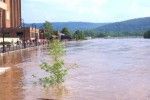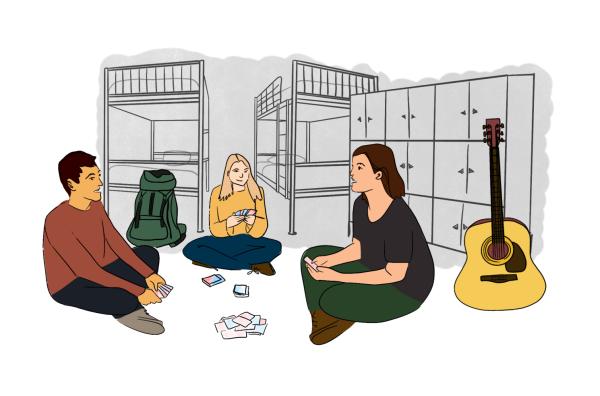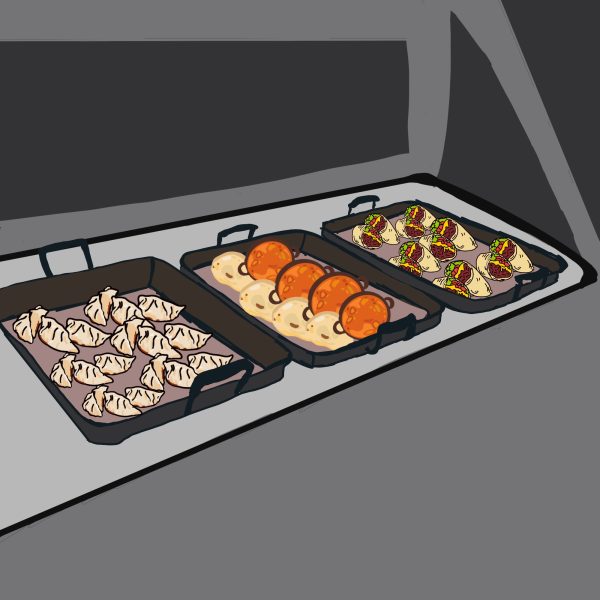Natural Disaster in Our Own Backyard?

Several weeks ago, I, like many Colgate students, packed up my car, put a pause on my academic woes and headed back home for the midterm break. The three-and-a-half hour drive to New Jersey went off without a hitch. Pulling into the driveway of the 902 Briarwoods Road residence, the familiar slew of memories flooded my mind, memories that date back as long as I can remember. I have lived in the same house my entire life (21 years to be exact) and, while I am not one to feel deep pangs of homesickness, I cannot imagine what I would do if I had turned onto my street that Friday afternoon to find nothing there. Unfortunately, many of the 20,000 residents asked to evacuate the Binghamton area on September 8 faced to some extent this exact reality when they returned home several days later.
While many can recall Tropical Storm Irene during the first few days of the fall semester, few among you are probably aware of its aftermath. Coupled with the landfall of Tropical Storm Lee, the Susquehanna River running through Binghamton reached a record high of 43 feet on September 9, causing extensive flooding throughout the area. Shortly after, the flooding zone was declared a disaster area, allowing FEMA to take action. In the following weeks, reports estimated the overall costs in property damage to be around $100 million. While reading facts like these from a news article is one thing, actually witnessing the extent of this damage is something completely different and more intense (as I would soon find out). As one of the leaders of the Disaster Response Team (DiRT) on campus, I was quickly bombarded with emails in the wake of the flooding.
In particular, a group of professors reached out to me about a former colleague living in Owego where the flooding had taken a significant toll on many of the homes. The following weekend, a group of students and I took the trip down to their home to help with gutting out their basement.
As we made our way through the winding roads of central New York to get to Owego, I tried to mentally prepare myself for what I would see. Having been on alternative break trips to New Orleans consecutively years in a row, I was aware of the devastation that massive hurricane flooding can cause.
But, even with these experiences in mind, I never truly believed that what I would be facing during this particular day would be in any way comparable to the damage I observed from Hurricane Katrina/Rita. In turning onto the main drag of town, everyone in the car was shocked in what they saw laying in front of them, including myself.
Both sides of the street were lined with mountains upon mountains of dry wall, broken pieces of wood and other matters of debris. A stream of people could be seen moving in and out of each home, many trying to salvage what minimal amount of household items were spared from the flooding.
Before venturing into the basement, we were tasked in helping one of the former Colgate professor’s neighbors pack up her remaining belongings. As we stepped into the neighbor’s home, the true extent of the damage finally started to set in. Waterlines could be seen as high as four feet with most of the first floor’s walls having been ripped out. Half a dozen packed boxes later, we arrived back to the professor’s home and began work on cleaning out their basement.
Side by side with fellow Colgate professors, we scooped up water-soaked dry wall and made our own heap of debris on the side of the road. By day’s end, we had completed our goal of cleaning out the basement.
While satisfied at the work we accomplished that day, all of us still knew that there was a lot more work to be done. Since that first trip on September 17, DiRT has been involved with another trip to Johnson City and with helping a winter clothes drive for a school district affected by the flooding. We will be continuing our flood relief efforts into November with additional trips to Fleischmanns, NY.
From that initial trip, I have reflected more upon my alternative break experiences and have also questioned my level of awareness of things going on in my own “backyard”. In a sense, I felt ashamed that I did not know more about the severity of the Binghamton flood beforehand. But since then, I have tried improving upon my awareness by reading more local news on Yahoo! and engaging in more conversations with individuals from around the area. It is little things like these that we as students can all find time to do. While attending alternative break trips is a great way to help a community in need, there are plenty of opportunities to get involved in disaster relief much closer to Colgate than you may think.
Contact Mack Goldberg at [email protected].









